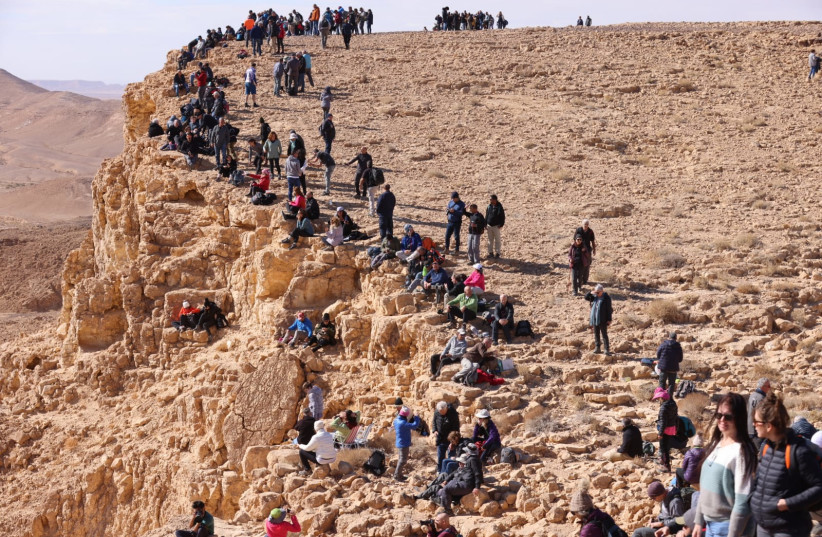While the center and north of Israel suffer the height of the "Carmel" storm, the weather in Israel’s southern Negev region remains sunny and pleasant, making it the perfect day for visitors to come to see the "burning bush" phenomenon on Mount Karkom.
Hundreds of hikers converged at Mount Karkom on Tuesday, which was the shortest day of the year (the day Earth is farthest from the sun – known as Winter Solstice). Firmly in the Negev region overlooking Israel’s border with Egypt, Mount Karkom is known for its peculiar “burning bush” phenomenon.
The “burning bush” of Mt. Karkom is actually a rock hole. While not exceptional on most days of the year, a few December days see a reflection of light on the edge of the hole leads to a vivid glow of light that resembles the biblical burning bush, which was the way God presented himself to Moses in the bible. This glow is most visible on December 21st – the shortest day of the year.
“The phenomenon persists even more in the shortest afternoon of the year, but can be seen both in the days close to it and in the afternoon,” explains Dr. Shachar Shilo, the Director of Tourism for the Negev Mountains. “It is not clear what exactly makes the light look like a glowing fire at the edge of a rock hole, but its edge is illuminating and shining only these days in December, when the peak of glow always occurs on December 21 - it is the shortest day of the year,” Shilo continues.


With the Carmel winter storm ravaging much of northern and central Israel, many took advantage of the military decision to open route 10 and allow access to the mountain – the first recorded time the route has been opened on a weekday.
The Carmel storm brought heavy rainfall to central and northern Israel on Monday, with 37.5 mm of rain falling in Jerusalem, 24.7 mm falling in Tel Aviv, 63.1 mm falling in Haifa and 75.1 mm falling in Safed.
